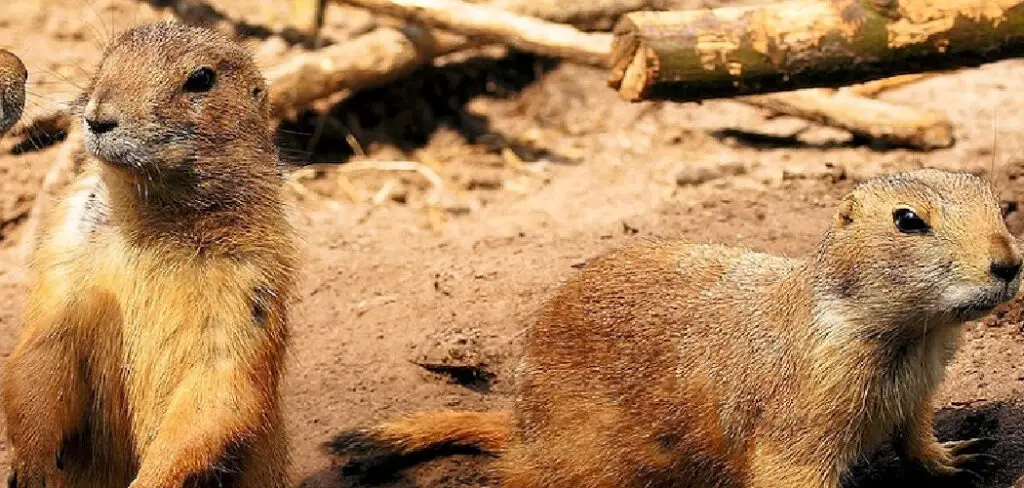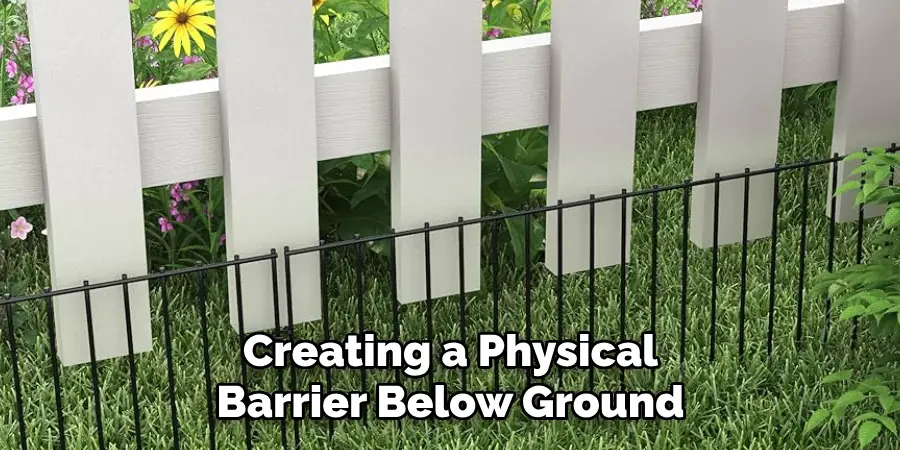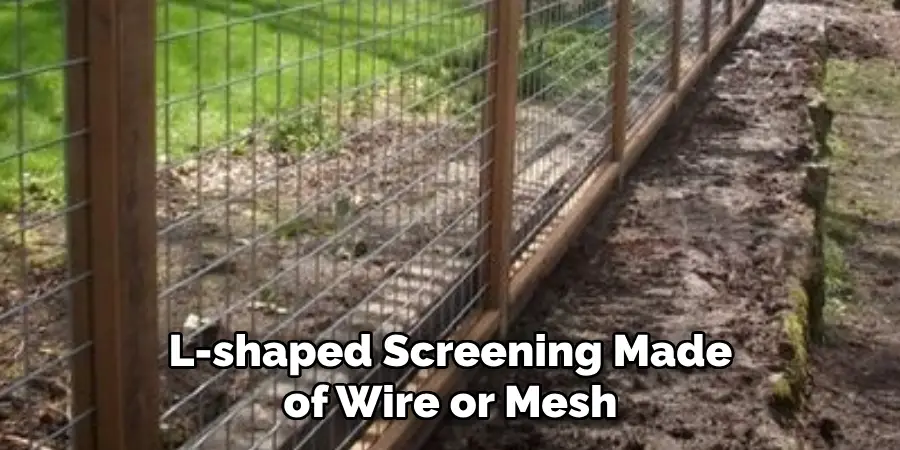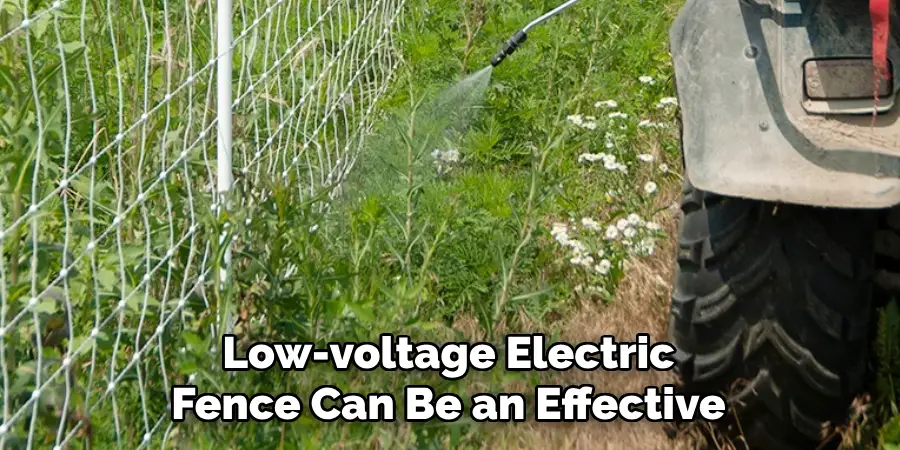Guarding your property against the relentless digging of groundhogs is essential for maintaining the integrity of your garden and preventing these persistent critters from infiltrating your outdoor space.

Groundhogs, also known as woodchucks, are notorious for burrowing under fences, causing potential damage and creating a haven for other unwanted pests. To thwart their tunneling efforts and preserve the sanctity of your yard, implementing effective preventative measures is crucial.
In this guide, we will delve into practical strategies and humane solutions on how to keep groundhogs from digging under fence. From barrier installations to natural deterrents, discover a range of methods that not only safeguard your property but also foster a harmonious coexistence with wildlife. Bid farewell to unwanted groundhog excavations and embrace a well-protected and thriving outdoor environment.
Importance of Preventing Groundhog Intrusion Under Fences
The importance of preventing groundhog intrusion cannot be overstated. These burrowing creatures can significantly compromise the structural stability of fences and other outdoor constructions.
Without proper containment, groundhogs can create extensive burrow systems that lead to soil erosion and the collapse of garden beds and landscaped areas. Furthermore, their digging activities might inadvertently damage underground cables or pipes, leading to costly repairs.
Aside from the physical damage, groundhogs can also be carriers of ticks and fleas, which poses additional health risks for pets and humans alike. Thus, the value of implementing measures to keep groundhogs at bay is both an economic and a health-related imperative.
Consequences of Groundhog Digging Under Fences

Groundhog burrowing under fences can lead to a host of negative consequences for homeowners and garden enthusiasts. The integrity of fence structures is at risk as these mammals dig out soil from underneath, often causing fences to tilt or collapse. This diminishes not only the aesthetic appeal but also the security of the property, making it more accessible to other wildlife or intruders.
Additionally, the underground tunnels created by groundhogs can divert water runoff in unexpected ways, increasing the potential for flooding and the degradation of the property’s landscaping. The effects of groundhog excavations extend beyond mere inconvenience, potentially incurring significant financial burden due to repair costs and decreased property value.
Understanding Groundhog Behavior
Recognizing the behavior of groundhogs is the first step in effectively deterring them from undermining fence lines. Groundhogs are diurnal rodents primarily active during the day, particularly in the early morning and late afternoon.
As vegetarians, they often seek out gardens as a source of food, which unfortunately leads them to the vicinity of fences. Their natural instinct to dig is not only for food foraging but also for creating a safe haven for living and rearing young.
Groundhogs tend to have a home range of about 2 to 3 acres and may have multiple burrows within this area. Understanding these behaviors is essential when strategizing on how to prevent groundhogs from burrowing under fences effectively; being aware of their patterns allows homeowners to predict and intercept their digging activities.
Characteristics and Habits of Groundhogs
Groundhogs, or Marmota monax, stand out in the animal kingdom with their stout bodies, bushy tails, and impressive digging abilities. Adults can weigh between 5 to 12 pounds and usually sport a coat of grizzled grayish-brown fur.

These creatures are distinguished by their chunky claws, which are primed for excavating the earth. In terms of habitat, groundhogs favor open fields and the edges of woodland areas where they can keep a lookout for predators while remaining close to their burrows.
Astonishingly, a single groundhog is capable of moving about 700 pounds of dirt to construct its burrow—a clear testament to their industrious nature.
These burrow systems often have multiple entrances and can extend up to 50 feet in length, featuring specific chambers designated for sleeping, rearing young, and hibernation. Groundhogs adhere to a seasonal routine, remaining most active in the warmer months before retreating into hibernation throughout the winter.
They primarily feed on vegetation, including fruits, grasses, and the plants found in many gardens, making them unintentional adversaries to gardeners and homeowners. Understanding these key characteristics and habits lays the foundation for crafting effective strategies to deter them from encroaching upon fenced areas.
Inspecting Fence Structure for Weaknesses and Gaps
Regular inspection of your fence is a critical preventative step in combatting groundhog intrusion. Homeowners should meticulously examine their fence lines for any signs of structural weaknesses, rot, or gaps that may provide easy access for groundhogs.
It is particularly important to look for areas where the fence meets the ground, as these are prime spots for these creatures to start their burrows. Ensure that the fence posts are securely anchored in the soil and that there are no spaces underneath where groundhogs can squeeze through.
Fences should be flush with the ground or, better yet, extend a few inches below the surface level to prevent digging. Even small gaps can be invitations for these determined burrowers, so sealing these vulnerabilities with suitable materials can serve as a strong line of defense against groundhog invasions.
10 Methods How to Keep Groundhogs from Digging Under Fence
1. Install a Buried Barrier:

One of the most robust approaches involves creating a physical barrier below ground. Dig a trench along the fence line and bury a mesh wire fence at least one to two feet deep. Ensure the wire extends outward at the bottom to deter groundhogs from burrowing underneath. To make the barrier even more effective, install a wire mesh fence with small openings (1 inch or less) and ensure that there are no gaps or holes in the fence.
This method of installing a buried barrier not only prevents groundhogs from digging under your fence, but it also acts as a deterrent for other animals such as rabbits and moles. It is important to regularly check and maintain the buried barrier, as groundhogs are known for their persistence and may try to find a way around it.
Furthermore, in addition to creating a physical barrier, you can also make your yard less appealing to groundhogs by keeping it clean and tidy. Remove any potential food sources such as fallen fruits or vegetables, and keep garbage cans tightly sealed. Additionally, try to eliminate any potential hiding spots by keeping your lawn mowed and free of clutter.
2. Use L-Screening:

Employ L-shaped screening made of wire or mesh along the base of the fence. This extends horizontally from the fence base and then turns vertically into the ground, forming an L-shape. This makes it challenging for groundhogs to dig underneath.
Another effective method to prevent groundhogs from digging under your fence is by using L-screening. This type of screening is made of wire or mesh and is installed along the base of the fence. The L-shape design extends horizontally from the fence base and then turns vertically into the ground, creating a barrier that makes it difficult for groundhogs to dig underneath.
This method is especially useful for areas with loose soil, as it provides a solid barrier that prevents groundhogs from burrowing through. Additionally, L-screening is also visually appealing and can easily blend in with the rest of your fence, making it an aesthetically pleasing solution for keeping groundhogs out.
3. Add Rocks or Gravel:
Covering the soil near the fence with rocks or gravel makes digging uncomfortable for groundhogs. They prefer soft soil, so creating a barrier of coarse material can discourage them from attempting to dig under the fence.
It is important to make sure the barrier extends at least 1 foot below ground level, as groundhogs are strong diggers and can easily move smaller rocks or gravel. Although, rocks and gravel may not be the most aesthetically pleasing option, they can be an effective deterrent for groundhogs.

Gravel is a popular choice for creating barriers against groundhogs because it allows water to pass through easily. This means that even if you have heavy rainfall or watering in your garden, the barrier will still be effective. Gravel also comes in a variety of sizes, allowing you to choose the best option for your specific needs. You can also consider using a combination of rocks and gravel for added effectiveness.
Aside from creating barriers, rocks and gravel can also be used as part of your garden’s landscape.
They can add texture, depth, and visual interest to your garden beds. When choosing rocks or gravel for this purpose, make sure to select ones that are not too heavy or sharp, as they can cause harm to your plants and any animals that may come into contact with them.
4. Apply Repellents:
Utilize natural or commercial repellents to deter groundhogs. Substances like castor oil, predator urine, or garlic-based sprays emit odors that are unpleasant to groundhogs, discouraging them from digging near the fence. These repellents can be applied directly to the soil around the perimeter of your yard or garden, creating a barrier that groundhogs will avoid.
It is important to note that these repellents should be reapplied after heavy rain or every few days to maintain their effectiveness.
Additionally, using a combination of different types of repellents may yield better results as groundhogs can become accustomed to a specific odor over time.
Another natural method of repelling groundhogs is by planting fragrant herbs or flowers, such as mint or marigolds, around the perimeter of your yard. The strong scents of these plants can also deter groundhogs from entering your property.
5. Install an Electric Fence:

A low-voltage electric fence can be an effective deterrent. Install it close to the ground, so if a groundhog attempts to dig or climb, it receives a mild electric shock. Ensure it’s set at an appropriate voltage to be effective but not harmful.
However, please note that electric fences are not suitable for all situations and may require additional permits or approvals. Make sure to check with your local authorities before installing one.
Additional considerations for electric fence installation include choosing the right type of fence and understanding any regulations or guidelines that may apply. Some factors to consider are the size of your property, the type of animals you want to keep out, and any potential hazards in the area.
There are a variety of electric fences available on the market, such as traditional wire fences, netting fences, and even solar-powered options. Each type has its own advantages and disadvantages, so it’s essential to do your research and choose the best one for your specific needs.
6. Create a Digging Pit:
Deviate groundhogs’ attention by providing a designated digging area filled with soft soil away from the fence. This diversion tactic can discourage them from tunneling under the actual fence.
However, keep in mind that groundhogs are persistent creatures and may still try to dig under or around the fence despite having a designated digging pit.
It is important to regularly check and maintain the designated digging area to ensure that it remains attractive to the groundhogs. This can involve refreshing the soil or occasionally adding new items such as sticks or rocks for them to dig around.
Furthermore, it is important to remember that groundhogs are burrowing animals and may also cause damage by digging near the foundation of your home or other structures.
To prevent this, make sure to inspect the perimeter of your property regularly and fill in any holes or tunnels that you find. You can also use barriers such as hardware cloth buried into the ground to prevent groundhogs from burrowing near your property.
7. Plant Perennial Repellent Plants:

Choose plants with strong scents that groundhogs dislike and plant them along the fence line. Examples include marigolds, daffodils, and garlic. This natural barrier can act as both a deterrent and an attractive garden addition.
Adding perennial repellent plants to your garden is a great way to keep groundhogs away without using harmful chemicals. Not only will they help keep the pesky critters at bay, but they also add beauty and diversity to your garden.
Some other great options for perennial repellent plants include lavender, catnip, sage, and rosemary. These herbs not only repel groundhogs, but also have many other beneficial qualities. For example, lavender can attract pollinators to your garden and catnip is known for its calming effects on cats.
It’s important to note that while these plants may help deter groundhogs, they are not guaranteed to completely eliminate them from your garden. It’s always a good idea to use multiple methods of groundhog control to ensure the best results.
8. Install Motion-Activated Devices:
Set up motion-activated sprinklers or noise-emitting devices near the fence. The sudden burst of water or loud sounds startle groundhogs, creating an unfavorable environment and dissuading them from digging.
There are several benefits to using motion-activated devices in your yard or garden. Not only can they help prevent damage from pests, but they can also conserve water and energy by only activating when needed.
One popular type of motion-activated device is the sprinkler system. These systems use sensors to detect movement and then release a burst of water, scaring off any animals in the area. They can be set up near fences, garden beds, or other areas where pests may be entering your property.
9. Regularly Inspect and Repair the Fence:
Conduct routine inspections of your fence to identify any potential weak points or gaps. Reinforce and repair any damaged areas promptly to prevent groundhogs from exploiting vulnerabilities in the structure. This will require you to pay close attention to your fence on a regular basis.
Inspect the areas where the fence connects, such as posts and gates. These are common areas where groundhogs may try to dig under or push through the fence. If you notice any loose or wobbly connections, secure them with additional hardware or reinforcements.
Another important aspect of maintaining your fence is to check for any signs of wear and tear. Over time, weather conditions and other factors can cause the fence to deteriorate. Look for areas where the wood may be rotting or where the wire mesh is starting to rust.
10. Seek Professional Assistance:
If all else fails, consider enlisting the help of a professional pest control service. They can assess the specific challenges posed by groundhogs in your area and implement targeted solutions to keep them at bay.
Whether through trapping and relocation or other methods, a professional can offer valuable insight and support in dealing with groundhogs. While it may come at a cost, the peace of mind and potential long-term effectiveness of their services can outweigh the financial investment in the long run.
Conclusion
In conclusion, safeguarding your property against groundhog intrusion involves a combination of proactive measures and ongoing vigilance. By understanding the behavior of groundhogs and assessing fence vulnerabilities, homeowners can effectively implement a variety of strategies to deter these animals from digging under fences.
Physical barriers such as underground mesh and extending fence depth offer reliable protection, while natural deterrents and repellents provide additional layers of defense. Moreover, utilizing home remedies and behavior modification techniques can complement these efforts.
Consistent maintenance and monitoring are crucial for ensuring the long-term effectiveness of these preventive measures. Thanks for reading, and we hope this has given you some inspiration on how to keep groundhogs from digging under fence!

